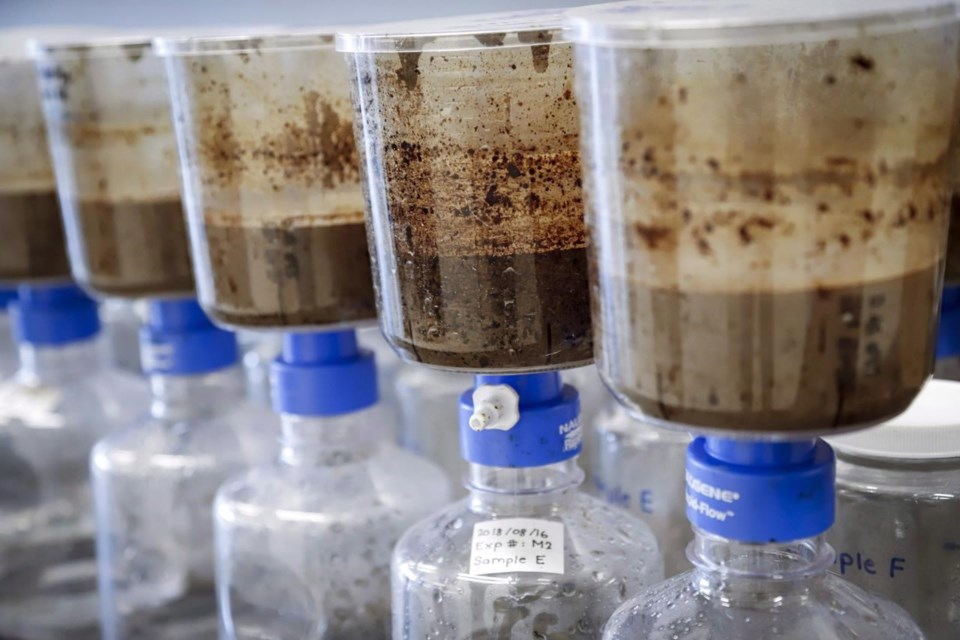EDMONTON ‚Äî Recent leaks of toxic tailings from northern Alberta oilsands mines have revealed serious flaws in how Canada and Alberta look after the environment, observers say.¬Ý
Some accuse the federal government of abandoning the province. Others point to what they call a captive provincial regulator. All agree that there's no way a leak from Imperial Oil's Kearl tailings ponds should have gone unreported for nine months to both Ottawa and Edmonton, as well as the people who live near it.
"We have never taken this issue seriously," said Martin Olszynski, a University of Calgary resource law professor and former federal regulatory lawyer. "They have never taken these risks and these threats seriously."
Imperial discovered "brown sludge" near one of its Kearl tailings ponds in May and it became clear over the summer the problem was significant.
However, the Alberta Energy Regulator didn't update First Nations or inform federal and provincial environment ministers about the issue until Feb. 7, when it issued a protection order after a second Kearl release of 5.3 million litres of tailings from a catchment pond. Federal legislation requires Environment Canada to be notified of such leaks within 24 hours.
"The biggest learning from this is that the province has oversight and control over what information the federal government is receiving," said Mandy Olsgard, a toxicologist who has worked on regulatory issues for the Alberta Energy Regulator and Indigenous groups.
Ottawa joins in the review panels that assess projects then mostly back away, Olsgard said.¬Ý
"They just hand it off to the province."
And then the province hands it off to a regulator that many consider too close to the industry it's supposed to oversee.¬Ý
"This regulator has always thought of its relationship being bilateral, between itself and industry," said Nigel Bankes, a retired professor of resource law at the University of Calgary. "Never triangular, never a three-legged stool involving the public.
"For me, this (Kearl release) just confirmed all of that."
That attitude is pervasive in the provincial government, Bankes said.¬Ý
"It's a general message of don't rock the boat," he said. "It permeates the department of energy and it permeates Alberta Environment."
Gabrielle Lamontagne, an Environment and Climate Change Canada spokesperson, said in an email the department is still figuring out what information Imperial reported to Alberta EDGE, in order to determine if the release met the triggers that would require the report to be forwarded to ECCC.
EDGE, which stands for Environmental and Dangerous Goods Emergencies, manages transportation of dangerous goods emergency calls in Alberta and assesses the severity of dangerous goods incidents. Its website says it "communicates openly with other regulatory agencies, such as the Alberta Energy Regulator (AER), in the event of an emergency or safety-related incident."
A survey conducted in 2021 for Alberta Environment found more than 85 per cent of Albertans had little confidence in the regulator's ability to govern industry, in that case coal. The survey also reported Albertans found the agency reluctant to release information and was not very transparent.¬Ý
Both federal Environment Minister Steven Guilbeault and his Alberta counterpart Sonya Savage have acknowledged things need to change.
"We need to take a step back and say 'What are the processes? Were they followed? And do we need to enhance them?'" Savage said this week. "We're committed to taking the step to enhancing all of those processes."
"We need to find better mechanisms," said Guilbeault.
But Marlin Schmidt, the Alberta New Democrat's environment critic, is skeptical.
He said the province and the regulator have already refused to tell him the scope and timeline for the investigation of the leak. Savage wouldn't commit to making the results of the investigation public, Schmidt said, nor would she promise to release results from an internal investigation into whether the regulator followed notification rules.¬Ý
"There's no investigation into what process led to the failure, nor any commitment to improving," he said. "We're just shrugging our shoulders and hoping next time things work out better."
The Kearl situation shows it can be a mistake for the federal government to "harmonize" regulations with the provinces and delegate oversight to them, Olszynski said.
"Given the kind of politics in this province, we could have seen that coming," he said. "We should have known that these folks aren't talking very well together, so you might want to rethink these arrangements that depend on them talking together."
Olszynski said oilsands operators should now be required to report spills or any other unscheduled releases directly to the federal government.
"I think it is time for Environment Canada to take a much more proactive role in tailings management," he said.¬Ý
The Kearl situation has made one thing clear, said Olsgard.
"It's made it obvious to the public that there are not good processes between the provinces and the feds."
This report by The Canadian Press was first published March 12, 2023.
Bob Weber, The Canadian Press




